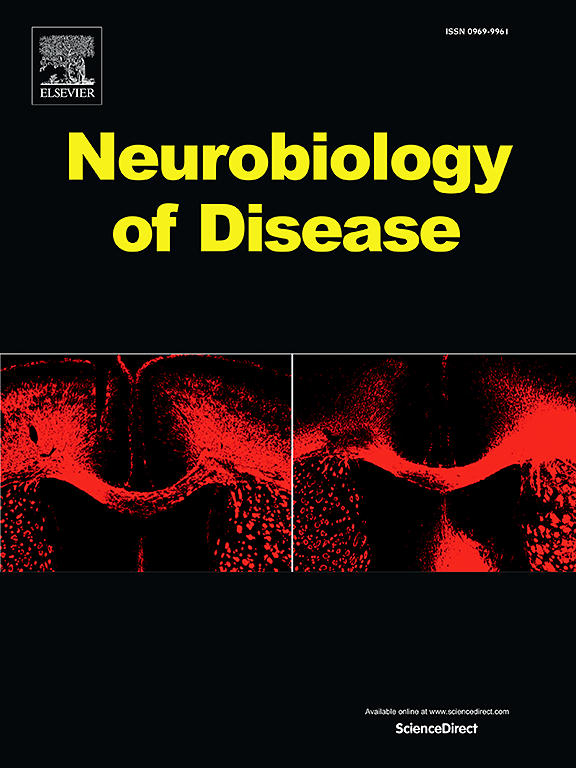认为大tau是脊髓运动神经元病理的一种新的特异性生物标志物。
IF 5.6
2区 医学
Q1 NEUROSCIENCES
引用次数: 0
摘要
大tau蛋白是tau蛋白的同工异构体,包括大的4 A外显子,导致一个延伸的投影结构域,表观分子量从40 - 65 kDa增加到95-110 kDa。其表达高度局限于外周神经系统和自主神经系统以及中枢神经系统的特定区域。虽然大tau的确切功能尚不清楚,但我们提出低分子量(LMW) tau的外显子4a扩展250个氨基酸的投射域及其结构特性可能增强长投射神经元的轴突运输并赋予抗聚集性。在这里,我们基于Big tau的特性提出了一个临床观点:Big tau在脊髓运动神经元中的选择性表达,而不是在上运动神经元或其他脊髓神经元群体中,可能使Big tau成为脊髓运动神经元病理的特异性生物标志物。这种表达模式对于追踪疾病的预后和进展,如肌萎缩侧索硬化症(ALS)和相关疾病,以确定退化何时进展到较低的运动神经元,可能特别有价值。因此,大tau可以作为神经丝或LMW tau蛋白的更特异性的生物标志物,或者可以与其他生物标志物联合使用,以提高特异性和敏感性。这一假设可以很容易地使用现有的样本和用于患者脑脊液(CSF)和血液样本的分析来验证。如果通过临床研究验证,Big tau可能为临床医生提供更好地诊断和监测各种运动神经元退行性疾病的新工具。为了加速这一领域的研究,我向研究界提供了大tau特异性多克隆抗体的实验数据和清单,以进一步研究大tau作为临床生物标志物。本文章由计算机程序翻译,如有差异,请以英文原文为准。
Considering Big tau as a novel and specific biomarker for spinal motor neuron pathology
Big tau is an isoform of tau that includes the large 4 A exon, resulting in an extended projection domain and an overall increase in apparent molecular weight from 40 to 65 kDa to 95–110 kDa. Its expression is highly restricted to the peripheral and autonomic nervous systems and select regions of the central nervous system. Although the precise function of Big tau remains unclear, we have proposed that the expanded projection domain of low molecular weight (LMW) tau by 250 amino acids of exon 4a and its structural properties may enhance axonal transport in long-projecting neurons and confer resistance to aggregation.
Here, we propose a clinical perspective based on the properties of Big tau: the selective expression of Big tau in spinal motor neurons, but not in upper motor neurons or other spinal neuronal populations, is likely to make Big tau a specific biomarker for spinal motor neuron pathology. This expression pattern may be particularly valuable for tracking disease prognosis and progression in conditions such as amyotrophic lateral sclerosis (ALS) and related disorders, to identify when degeneration advances to lower motor neurons. Big tau could thus serve as a more specific biomarker to neurofilament or LMW tau proteins or can be used in combination with other biomarkers to enhance the specificity and sensitivity.
This hypothesis can be readily tested using existing samples and assays applied to cerebrospinal fluid (CSF) and blood samples from patients. If validated through clinical studies, Big tau may provide clinicians with a new tool to better diagnose and monitor a variety of motor neuron degenerative disorders. To accelerate research in this area, I offer to share experimental data and an inventory of polyclonal antibodies specific to Big tau to the research community to enable further investigation of Big tau as a clinical biomarker.
求助全文
通过发布文献求助,成功后即可免费获取论文全文。
去求助
来源期刊

Neurobiology of Disease
医学-神经科学
CiteScore
11.20
自引率
3.30%
发文量
270
审稿时长
76 days
期刊介绍:
Neurobiology of Disease is a major international journal at the interface between basic and clinical neuroscience. The journal provides a forum for the publication of top quality research papers on: molecular and cellular definitions of disease mechanisms, the neural systems and underpinning behavioral disorders, the genetics of inherited neurological and psychiatric diseases, nervous system aging, and findings relevant to the development of new therapies.
 求助内容:
求助内容: 应助结果提醒方式:
应助结果提醒方式:


